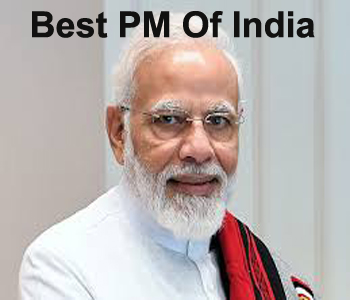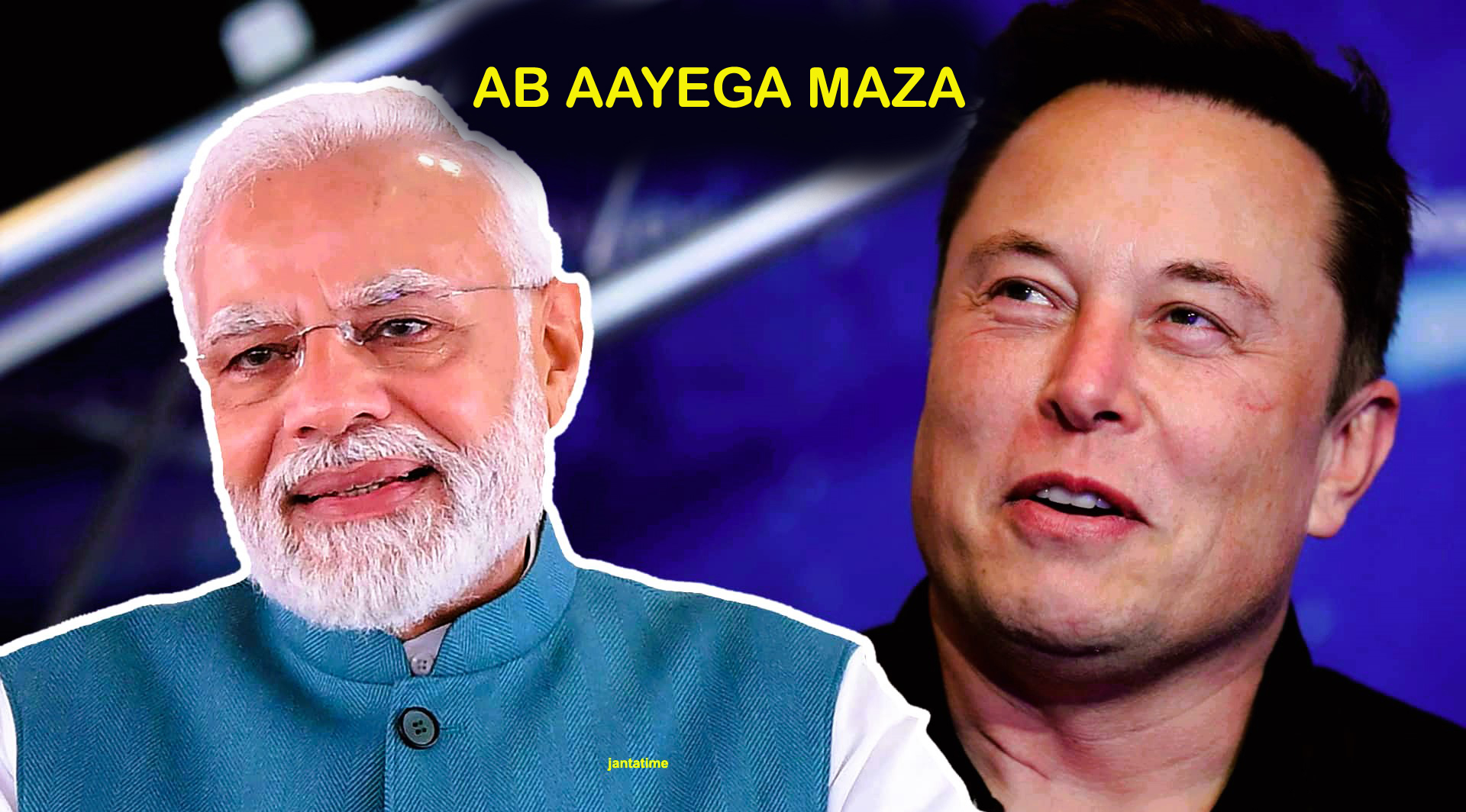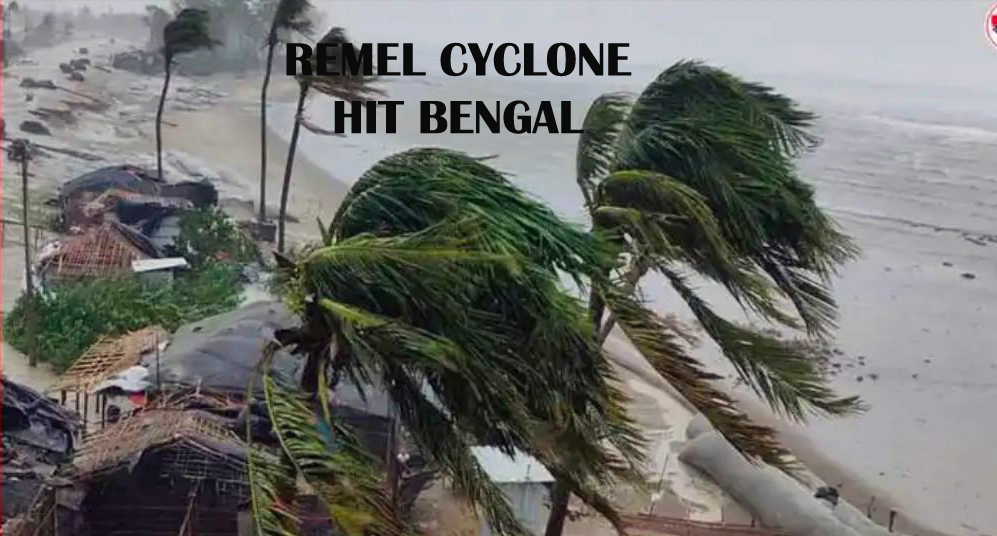Narendra Modi : The Prime Minister of India
Narendra Damodardas Modi born 17 September 1950 is an Indian politician who has served as the 14th prime minister of India since May 2014. Narendra Modi was the chief minister of Gujarat from 2001 to 2014 and is the Member of Parliament (MP) for Varanasi. He is a member of the Bharatiya Janata Party (BJP) and of the Rashtriya Swayamsevak Sangh (RSS), a right wing Hindu nationalist paramilitary volunteer organisation. He is the longest-serving prime minister from outside the Indian National Congress.

Narendra Modi Childhood And Career
Narendra Modi was born and raised in Vadnagar in northeastern Gujarat, where he completed his secondary education. Narendra modi was introduced to the RSS at the age of eight. His account of helping his father sell tea at the Vadnagar railway station has not been reliably corroborated. At age 18, he was married to Jashodaben Modi, whom he abandoned soon after, only publicly acknowledging her four decades later when legally required to do so. Modi became a full-time worker for the RSS in Gujarat in 1971. The RSS assigned him to the BJP in 1985 and he held several positions within the party hierarchy until 2001, rising to the rank of general secretary.
According to Narendra Modi, as a child, he had to work in his father’s tea shop on the platform of Vadnagar railway station but the evidence of his neighbours does not entirely corroborate this statement During a protest against the government, his brother, Prahlad Modi, contradicted that he ever sold tea. According to him, his father had brought up six of his children by selling tea and people were making a mistake by calling the Prime Minister a “chai wala” (tea seller)
Modi completed his higher secondary education in Vadnagar in 1967; his teachers described him as an average student and a keen, gifted debater with an interest in theatre.
In mid 1968, Modi reached Belur Math but was turned away, after which he visited Calcutta, West Bengal and Assam, stopping in Siliguri and Guwahati. He then went to the Ramakrishna Ashram in Almora, where he was again rejected, before returning to Gujarat via Delhi and Rajasthan in 1968 to 1969. In either late 1969 or early 1970, he returned to Vadnagar for a brief visit before leaving again for Ahmedabad,where he lived with his uncle and worked in his uncle’s canteen at Gujarat State Road Transport Corporation.
In 1978, Modi received a Bachelor of Arts (BA) degree in political science from the School of Open Learning at the Delhi University.In 1983, he received a Master of Arts (MA) degree in political science from Gujarat University, graduating with a first class as an external distance learning student. There is a controversy surrounding the authenticity of his BA and MA degrees
Early political career
In June 1975, Prime Minister Indira Gandhi declared a state of emergency in India that lasted until 1977. During this period, known as “the Emergency”, many of her political opponents were jailed and opposition groups were banned. Modi was appointed general secretary of the “Gujarat Lok Sangharsh Samiti”, an RSS committee co-ordinating opposition to the Emergency in Gujarat. Shortly afterwards, the RSS was banned. Modi was forced to go underground in Gujarat and frequently travelled in disguise to avoid arrest, once dressing as a monk and once as a Sikh.He became involved in the printing of pamphlets opposing the government, sending them to Delhi and organising demonstrations.He was also involved with creating a network of safe houses for individuals who were wanted by the government, and in raising funds for political refugees and activists. During this period, Modi wrote a Gujarati-language book titled Sangharsh Ma Gujarat (In the Struggles of Gujarat), which describes events during the Emergency. While in this role, Narendra Modi met trade unionist and socialist activist George Fernandes and several other national political figures

Development projects
As chief minister, Narendra Modi favoured privatisation and small government, which was at odds with the philosophy of the RSS, which is usually described as anti-privatisation and anti-globalisation. Narendra Modi’s policies during his second term have been credited with reducing corruption in Gujarat. He established financial and technology parks in the state and during the 2007 Vibrant Gujarat summit, real-estate investment deals worth ₹6.6 trillion (equivalent to ₹20 trillion or US$250 billion in 2023) were signed.
The governments led by Patel and Narendra Modi supported NGOs and communities in the creation of groundwater-conservation projects. By December 2008, 500,000 structures had been built, of which 113,738 were check dams, which helped recharge the aquifers beneath them. Sixty of the 112 tehsils which had depleted the water table in 2004 had regained their normal groundwater levels by 2010.As a result, the state’s production of genetically modified cotton increased to become the largest in India.The boom in cotton production and its semi-arid land use led to Gujarat’s agricultural sector growing at an average rate of 9.6 percent from 2001 to 2007. Public irrigation measures in central and southern Gujarat, such as the Sardar Sarovar Dam, were less successful. The Sardar Sarovar project irrigated only 4–6% of the area intended. In 2008, Narendra Modi offered land in Gujarat to Tata Motors to set up a plant manufacturing the Nano car after popular agitation had forced the company to move out of West Bengal. Following Tata, several other companies relocated to Gujarat.
Quick Facts About Narendra Modi
- Early Life: Narendra Modi was born on September 17, 1950, in Vadnagar, Gujarat, India. He was raised in a modest family of grocers.
- Political Journey: Modi started his political career as a member of the Rashtriya Swayamsevak Sangh (RSS), a Hindu nationalist organization. He then joined the Bharatiya Janata Party (BJP) and rose through its ranks.
- Chief Minister of Gujarat: Modi served as the Chief Minister of Gujarat from 2001 to 2014, during which he focused on economic development, infrastructure, and investment in the state.
- Controversies: Modi’s tenure as Chief Minister was marked by both praise for his economic policies and criticism for his handling of the 2002 Gujarat riots, in which over a thousand people, mainly Muslims, were killed.
- 2014 Election Victory: In May 2014, Modi led the BJP to a historic victory in the Indian general elections, securing a majority on its own. He became the 14th Prime Minister of India.
- Economic Reforms: As Prime Minister, Modi launched several initiatives aimed at boosting economic growth, including the “Make in India” campaign to promote manufacturing and the Goods and Services Tax (GST) to streamline the tax system.
- Foreign Policy: Modi’s foreign policy initiatives focused on improving relations with neighboring countries and enhancing India’s global standing. He embarked on numerous international visits, strengthening ties with key nations such as the United States, Japan, and Israel.
- Demonetization: In November 2016, Modi announced the demonetization of ₹500 and ₹1000 banknotes, aimed at curbing corruption, counterfeit currency, and black money. The move, however, received mixed reactions from the public and economists.
- Swachh Bharat Abhiyan: Modi launched the Swachh Bharat Abhiyan (Clean India Mission) in 2014, a nationwide campaign aimed at promoting cleanliness and improving sanitation across the country.
- 2020 COVID-19 Pandemic: Modi faced immense challenges during the COVID-19 pandemic, implementing strict lockdown measures to curb the spread of the virus while also facing criticism for the handling of the crisis, especially regarding migrant workers’ welfare and the healthcare infrastructure.
- Electoral Success: In the 2019 general elections, Modi and the BJP secured a landslide victory, further consolidating their political dominance in India.
These facts offer a glimpse into the life, career, and impact of Narendra Modi on Indian politics and society.
Pm Narendra Modi Exclusive Interaction With Bill Gates
READ IN HINDI
नरेंद्र मोदी: भारत के प्रधान मंत्री
नरेंद्र दामोदरदास मोदी, जिनका जन्म 17 सितंबर 1950 को हुआ था, एक भारतीय राजनीतिज्ञ हैं, जिन्होंने मई 2014 से भारत के 14वें प्रधान मंत्री
के रूप में कार्य किया है। मोदी 2001 से 2014 तक गुजरात के मुख्यमंत्री थे और वाराणसी से संसद सदस्य (सांसद) हैं। वह भारतीय जनता पार्टी
(भाजपा) और राष्ट्रीय स्वयंसेवक संघ (आरएसएस) के सदस्य हैं, जो एक दक्षिणपंथी हिंदू राष्ट्रवादी अर्धसैनिक स्वयंसेवी संगठन है। वह भारतीय राष्ट्रीय
कांग्रेस के बाहर से सबसे लंबे समय तक सेवा करने वाले प्रधान मंत्री हैं।
नरेंद्र मोदी (Narendra Modi ) का बचपन और करियर
नरेंद्र मोदी (Narendra Modi )का जन्म और पालन-पोषण पूर्वोत्तर गुजरात के वडनगर में हुआ, जहां उन्होंने अपनी माध्यमिक शिक्षा पूरी की। आठ साल की उम्र
में उनका आरएसएस से परिचय हुआ। वडनगर रेलवे स्टेशन पर अपने पिता को चाय बेचने में मदद करने के उनके वृत्तांत की विश्वसनीय रूप से
पुष्टि नहीं की गई है। 18 साल की उम्र में, उनकी शादी जशोदाबेन मोदी से हुई थी, जिसे उन्होंने जल्द ही छोड़ दिया, केवल चार दशक बाद
सार्वजनिक रूप से उन्हें स्वीकार किया जब कानूनी रूप से ऐसा करना आवश्यक था। मोदी 1971 में गुजरात में आरएसएस के पूर्णकालिक कार्यकर्ता
बन गए। आरएसएस ने उन्हें 1985 में भाजपा को सौंपा और उन्होंने 2001 तक पार्टी पदानुक्रम के भीतर कई पदों पर काम किया, और महासचिव
के पद तक पहुंचे।
नरेंद्र मोदी के अनुसार, बचपन में उन्हें वडनगर रेलवे स्टेशन के प्लेटफॉर्म पर अपने पिता की चाय की दुकान में काम करना पड़ा था, लेकिन उनके पड़ोसियों के साक्ष्य इस कथन की पूरी तरह से पुष्टि नहीं करते हैं, सरकार के खिलाफ एक विरोध प्रदर्शन के दौरान उनके भाई प्रह्लाद मोदी ने इस बात का खंडन किया कि उन्होंने कभी चाय बेची थी। उनके मुताबिक, उनके पिता ने चाय बेचकर अपने छह बच्चों को पाला था और लोग प्रधानमंत्री को 'चाय वाला' कहकर गलती कर रहे हैं। मोदी ने अपनी उच्च माध्यमिक शिक्षा 1967 में वडनगर में पूरी की; उनके शिक्षकों ने उन्हें एक औसत छात्र और थिएटर में रुचि रखने वाला एक उत्सुक, प्रतिभाशाली वाद-विवादकर्ता बताया। 1968 के मध्य में, मोदी (Narendra Modi )बेलूर मठ पहुंचे लेकिन उन्हें लौटा दिया गया, जिसके बाद उन्होंने सिलीगुड़ी और गुवाहाटी में रुकते हुए कलकत्ता, पश्चिम बंगाल और असम का दौरा किया। इसके बाद वह 1968 से 1969 तक दिल्ली और राजस्थान के रास्ते गुजरात लौटने से पहले, अल्मोडा में रामकृष्ण आश्रम गए, जहां उन्हें फिर से अस्वीकार कर दिया गया। 1969 के अंत में या 1970 की शुरुआत में, वह अहमदाबाद के लिए फिर से रवाना होने से पहले एक संक्षिप्त यात्रा के लिए वडनगर लौटे। , जहां वह अपने चाचा के साथ रहता था और गुजरात राज्य सड़क परिवहन निगम में अपने चाचा की कैंटीन में काम करता था। 1978 में, मोदी ने दिल्ली विश्वविद्यालय के स्कूल ऑफ ओपन लर्निंग से राजनीति विज्ञान में कला स्नातक (बीए) की डिग्री प्राप्त की। 1983 में, उन्होंने गुजरात विश्वविद्यालय से राजनीति विज्ञान में मास्टर ऑफ आर्ट्स (एमए) की डिग्री प्राप्त की, और स्नातक की उपाधि प्राप्त की। बाह्य दूरस्थ शिक्षा छात्र के रूप में प्रथम श्रेणी। उनकी बीए और एमए की डिग्री की प्रामाणिकता को लेकर विवाद है
प्रारंभिक राजनीतिक कैरियर
जून 1975 में, प्रधान मंत्री इंदिरा गांधी ने भारत में आपातकाल की स्थिति की घोषणा की जो 1977 तक चली। इस अवधि के दौरान,
जिसे "आपातकाल" के रूप में जाना जाता है, उनके कई राजनीतिक विरोधियों को जेल में डाल दिया गया और विपक्षी समूहों पर प्रतिबंध
लगा दिया गया। मोदी को "गुजरात लोक संघर्ष समिति" का महासचिव नियुक्त किया गया, जो गुजरात में आपातकाल के विरोध का समन्वय
करने वाली आरएसएस समिति थी। कुछ ही समय बाद आरएसएस पर प्रतिबंध लगा दिया गया। मोदी को गुजरात में भूमिगत होने के लिए
मजबूर होना पड़ा और गिरफ्तारी से बचने के लिए वे अक्सर भेष बदलकर यात्रा करते थे, एक बार साधु के रूप में और एक बार सिख के
रूप में। वह सरकार के विरोध में पर्चे छापने, उन्हें दिल्ली भेजने और प्रदर्शनों का आयोजन करने में शामिल हो गए।वह सरकार द्वारा
वांछित व्यक्तियों के लिए सुरक्षित घरों का नेटवर्क बनाने और राजनीतिक शरणार्थियों और कार्यकर्ताओं के लिए धन जुटाने में भी शामिल थे।
इस अवधि के दौरान, मोदी ने संघर्ष मा गुजरात (गुजरात के संघर्ष में) शीर्षक से एक गुजराती भाषा की पुस्तक लिखी, जिसमें आपातकाल
के दौरान की घटनाओं का वर्णन किया गया है। इस भूमिका में रहते हुए, मोदी ने ट्रेड यूनियनवादी और समाजवादी कार्यकर्ता जॉर्ज फर्नांडीस
और कई अन्य राष्ट्रीय राजनीतिक हस्तियों से मुलाकात की।
विकास परियोजनाओं मुख्यमंत्री के रूप में, मोदी (Narendra Modi ) निजीकरण और छोटी सरकार के पक्षधर थे, जो आरएसएस के दर्शन के विपरीत था, जिसे आमतौर पर निजीकरण विरोधी और वैश्वीकरण विरोधी के रूप में वर्णित किया जाता है। अपने दूसरे कार्यकाल के दौरान नरेंद्र मोदी की नीतियों को गुजरात में भ्रष्टाचार को कम करने का श्रेय दिया गया है। उन्होंने राज्य में वित्तीय और प्रौद्योगिकी पार्क स्थापित किए और 2007 वाइब्रेंट गुजरात शिखर सम्मेलन के दौरान, ₹6.6 ट्रिलियन (2023 में ₹20 ट्रिलियन या यूएस$250 बिलियन के बराबर) के रियल एस्टेट निवेश सौदों पर हस्ताक्षर किए गए। पटेल और मोदी के नेतृत्व वाली सरकारों ने भूजल-संरक्षण परियोजनाओं के निर्माण में गैर सरकारी संगठनों और समुदायों का समर्थन किया। दिसंबर 2008 तक, 500,000 संरचनाएं बनाई जा चुकी थीं, जिनमें से 113,738 चेक डैम थे, जिससे उनके नीचे के जलभृतों को रिचार्ज करने में मदद मिली। 2004 में जिन 112 तहसीलों में जल स्तर कम हो गया था, उनमें से साठ ने 2010 तक अपना सामान्य भूजल स्तर वापस पा लिया था। परिणामस्वरूप, आनुवंशिक रूप से संशोधित कपास का राज्य का उत्पादन भारत में सबसे बड़ा हो गया। कपास उत्पादन में तेजी और इसका अर्ध- शुष्क भूमि उपयोग के कारण 2001 से 2007 तक गुजरात का कृषि क्षेत्र औसतन 9.6 प्रतिशत की दर से बढ़ रहा था। मध्य और दक्षिणी गुजरात में सरदार सरोवर बांध जैसे सार्वजनिक सिंचाई उपाय कम सफल रहे। सरदार सरोवर परियोजना से इच्छित क्षेत्र का केवल 4-6% सिंचित हुआ। 2008 में, नरेंद्र मोदी ने टाटा मोटर्स को नैनो कार बनाने वाला संयंत्र स्थापित करने के लिए गुजरात में जमीन की पेशकश की थी, क्योंकि लोकप्रिय आंदोलन के कारण कंपनी को पश्चिम बंगाल से बाहर जाने के लिए मजबूर होना पड़ा था। टाटा के बाद, कई अन्य कंपनियां गुजरात में स्थानांतरित हो गईं।
- नरेंद्र मोदी (Narendra Modi )भारतीय राजनीतिज्ञ हैं जो भारत के प्रधानमंत्री रह चुके हैं।
- उन्होंने 2014 में भारतीय राजनीति में भारी जीत हासिल की और भारतीय जनता पार्टी (भा.ज.पा.) के प्रधानमंत्री पद को अधिकार में लिया।
- नरेंद्र मोदी (Narendra Modi )गुजरात के पूर्व मुख्यमंत्री भी रह चुके हैं।
- उनका जन्म 17 सितंबर 1950 को गुजरात के वडनगर जिले के वडनगर नामक स्थान पर हुआ था।
- मोदी जी ने अपने योगदान के लिए कई अंतर्राष्ट्रीय पुरस्कार भी प्राप्त किए हैं, जैसे कि सेप्टम्बर 2021 में अमेरिकी फाउंडेशन का ‘इंटरनेशनल पर्सन ऑफ दि इयर’ पुरस्कार।
- उनकी राजनीतिक और समाजसेवा योग्यताओं को मानते हुए, उन्हें भारत रत्न, देश की सबसे उच्च नागरिक सम्मान, से सम्मानित किया गया है।
- मोदी जी (Narendra Modi )के नेतृत्व में भारत में कई महत्वपूर्ण कानूनी और सामाजिक परिवर्तन किए गए हैं, जैसे कि गुजरात में विकास और पर्यावरण के क्षेत्र में नई पहल।
- उनके नेतृत्व में ‘स्वच्छ भारत अभियान’ और ‘डिजिटल इंडिया’ जैसी महत्वपूर्ण पहलें शुरू की गईं जो देश के विकास को गति देने में मदद कर रही हैं।
- मोदी जी (Narendra Modi )को भारतीय जनता पार्टी (भा.ज.पा.) का महासचिव भी चुना गया था।
- उनके प्रधानमंत्रित्व काल में भारत के अर्थव्यवस्था में कई सुधार हुए हैं, जो देश की ग्रोथ और विकास में महत्वपूर्ण भूमिका निभा रहे हैं।
WATCH WEBSTORIES
News source-wikipedia
Discover more from Janta Time
Subscribe to get the latest posts sent to your email.




2 thoughts on “Narendra Modi : The Best Prime Minister of India (2014-Present)”